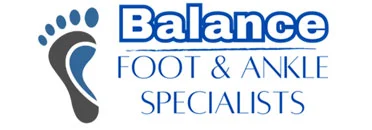Expert Foot & Ankle Treatment from Michigan’s #1 Podiatrist - Balance Foot & Ankle Specialist
Stop Letting a Foot Wart Slow Your Steps.
Foot Wart Verruca Pain
A foot wart, verruca or plantar wart is no different than a wart on any other part of the body. These warts eventually go away by themselves, but they are potentially contagious and could stay around for a couple years; treatment is usually recommended to decrease the length of pain, the duration of pain and to decrease the chance of transferring it to other parts of the body.
Foot Warts 101: Why They Form and How to Get Rid of Them
A foot wart—often called a plantar wart or verruca—is a small, rough growth on the sole caused by the human papillomavirus (HPV). While usually harmless, it can feel like you’re walking on a pebble and may spread if left untreated. Understanding your treatment choices—from over-the-counter acids to professional cryotherapy, laser, or surgical removal—helps you choose the quickest, safest path back to pain-free walking.
Foot Wart Basics: Causes, Risk Factors, and Treatment Pathst
Foot warts develop when HPV enters tiny cuts in the skin, typically in warm, moist places such as gyms, pools, and locker-room floors.
Common signs:
Grainy, cauliflower-like bump with black “seed” dots
Pain when pressure is applied
Thickened skin or callus over the lesion
Risk factors: barefoot walking in public areas, weak immune system, sweaty feet, sharing socks or shoes.
Treatment tiers:
Home care – salicylic-acid pads, duct tape occlusion, daily pumice filing
Professional care – cryotherapy (freezing), blistering agents, laser therapy, debridement
Preventive steps – moisture-wicking socks, foot hygiene, sandals in communal areas
Early treatment prevents spreading and shortens recovery time.
Ready to Walk Wart-Free? Book Your Visit Today
Persistent foot wart pain? Our podiatrists use advanced cryotherapy, laser, and topical therapies to eliminate warts quickly—and keep them from coming back.
Call now or book an appointment online—your peace of mind starts here.
Top-Rated Foot Care Products Recommended by Podiatrists
Trusted Solutions To Soothe, Protect, and Support Your Feet
Finding the best products for managing peripheral neuropathy and diabetic foot pain can make a world of difference in your daily comfort and mobility.
When it comes to managing foot pain from conditions like plantar fasciitis, flat feet, or diabetic neuropathy, the best orthotics can offer crucial support and relief.
Choosing the best shoes for foot conditions like neuropathy, plantar fasciitis, or flat feet is essential for pain relief and long-term foot health.
Cause of a Foot Wart or Verruca
- HPV (Human Papilloma Virus) is the cause of warts.
- The virus can stay alive for many weeks without a host ,especially in the shower!
- The wart enters through microscopic cracks in the skin of the foot or the fingers.
- If a cluster of warts forms, it is called a Mosaic wart which can create extremely large surface areas.
- It is completely normal to get a wart – most warts occur in 12-16 year old children, but are very rare in older age.
Symptoms of a Foot Wart or Verruca
- Not usually painful although may be tender when pressed, especially from the sides.
- The verruca may feel like a small stone under the foot.
- It looks different from a callus because of little red pin like dots- a callus looks like normal but thicker skin.
- There is usually a callus that forms around the wart.
Diagnosis of a Foot Wart or Verruca
- Verrucas vary in size from a 1mm to over 1 cm and may vary in shape too.
- The surface of the verruca is usually covered with small black dots (blood vessels).
- They are usually surrounded by hard skin.
- There is usually nothing ever really tricky about diagnosing a wart.
- If the wart is really large then it is a more resistant mosaic wart that needs more attention.
Prevention of a Foot Wart or Verruca
- Warts and verrucas are very common and nothing to get worked up about (especially ages 12-16 years old), although they should be treated as they are mildly contagious.
- They are only passed on via direct skin to skin contact and can be passed to other people or to other areas of your body (although this is more common when warts appear on the fingers).
- There is a higher risk of passing a verruca if the skin is damaged or wet.
- Swimming pools are common infection area for verrucas.
- To avoid passing on a verruca, make sure it is covered when you go swimming (either buy a waterproof plaster, duct tape or special verruca sock), wear flip flops when walking barefoot and in the shower and don’t share towels.
Home Treatment of a Foot Wart or Verruca
There are many available treatment methods without a clear winner, because even doing nothing after a little while will make the wart go away! Studies show that you can make them go away a little bit faster and some of the best treatments achieve 70-90% cure rates within a couple weeks. If you have a mosaic wart then the chemical treatment approaches are recommended.
1st Line Therapy of a Foot Wart or Verruca
– Duct Tape is my favorite method to try first!
A. Duct Tape Treatment
This is a controversial treatment method, some scientific literature states that it works great and it can resolve the majority of warts over a couple weeks, but then other papers say it does not work at all. I say whats the harm in trying it! This method has always worked for me, and if it didn’t work in the future- you can always move on to the other treatments!
B. Apple Cider Vinegar Treatment
-Theoretically this should work, there will be some pain! Compare this to the duct tape method which is slower, safer and has no pain.
C. Salicylic Acid
-This medication is known as a keratolytic agent which works by “loosening” the surface of the wart. Use this medication as directed by your pharmacist or your podiatrist.
2nd Line Therapy
– All of these have shown to be effective, but it is unclear which is the best (which means none of them are clearly better than any other). Canthardin and Cryosurgery are the most commonly used in podiatrist offices.
A. Canthardin–
This is a more painful but more effective agent than salicylic avid. It causes a blister to form within a day or so of application to your blister.
B. -Cryosurgery-
The wart is touched by a liquid nitrogen swab. This freezes the cells of the wart destroying the tissue and stimulating new tissue to come up behind it. This sounds a lot more intense then it really is!
C. –Immunotherapy–
This is a fairly new treatment that involves injecting something (any dead foreign particles that are not dangerous) that irritate your immune system to attack this area. As a “coincidence” the immune system cells wipe out the HPV virus that is causing the wart.
3rd Line Therapy
– The most common method is to cut the wart out and then use electricity to singe the underlying tissue under anesthesia.
– If the wart is extremely resistant consult a podiatrist about invasive treatment. These treatments are usually reserved for warts that have survived the first and second lines of treatment.
–Surgery– This can be done inside the office if the foot is not massive, but if it is a large mosaic wart- then the OR is usually necessary. The foot is numbed with anesthetic, then then the wart is simply cut out down to bleeding. The tissue is then heated to close it up; don’t worry, you won’t see whats happening! The wart can be considered as good as gone at this point and while there will be a scar, it should not be something that ever bothers you.
-Electrocautery– this is combined with surgery to burn the area where the wart used to be.
-Laser Surgery- It is a choice, but from what I have heard and seen it is more expensive than practical.
Schedule Your Visit – End High Ankle Pain Sooner
Don’t Let High Ankle Sprain Pain Hold You Back.
Foot Wart FAQ – Your Top Questions Answered
Warts have tiny black dots and interrupt skin lines; calluses are smooth and uniform.
Yes—HPV spreads through direct skin contact or shared surfaces like showers.
Some resolve in 6-24 months, but many persist or multiply without treatment.
Cryotherapy or laser ablation often remove warts in 1-3 sessions.
It can, but success rates improve when combined with regular debridement and podiatry guidance.
In-office treatments may cause brief discomfort; local anesthetic or numbing spray minimizes pain.
Low-impact activity is fine, but protect the wart with padding and avoid barefoot surfaces.
Recurrence is possible; follow hygiene tips and treat new lesions promptly.
Yes—gentler methods like topical acids or low-temperature cryotherapy are preferred.
If the wart is painful, enlarging, multiplying, or unchanged after 2-3 weeks of home care.

